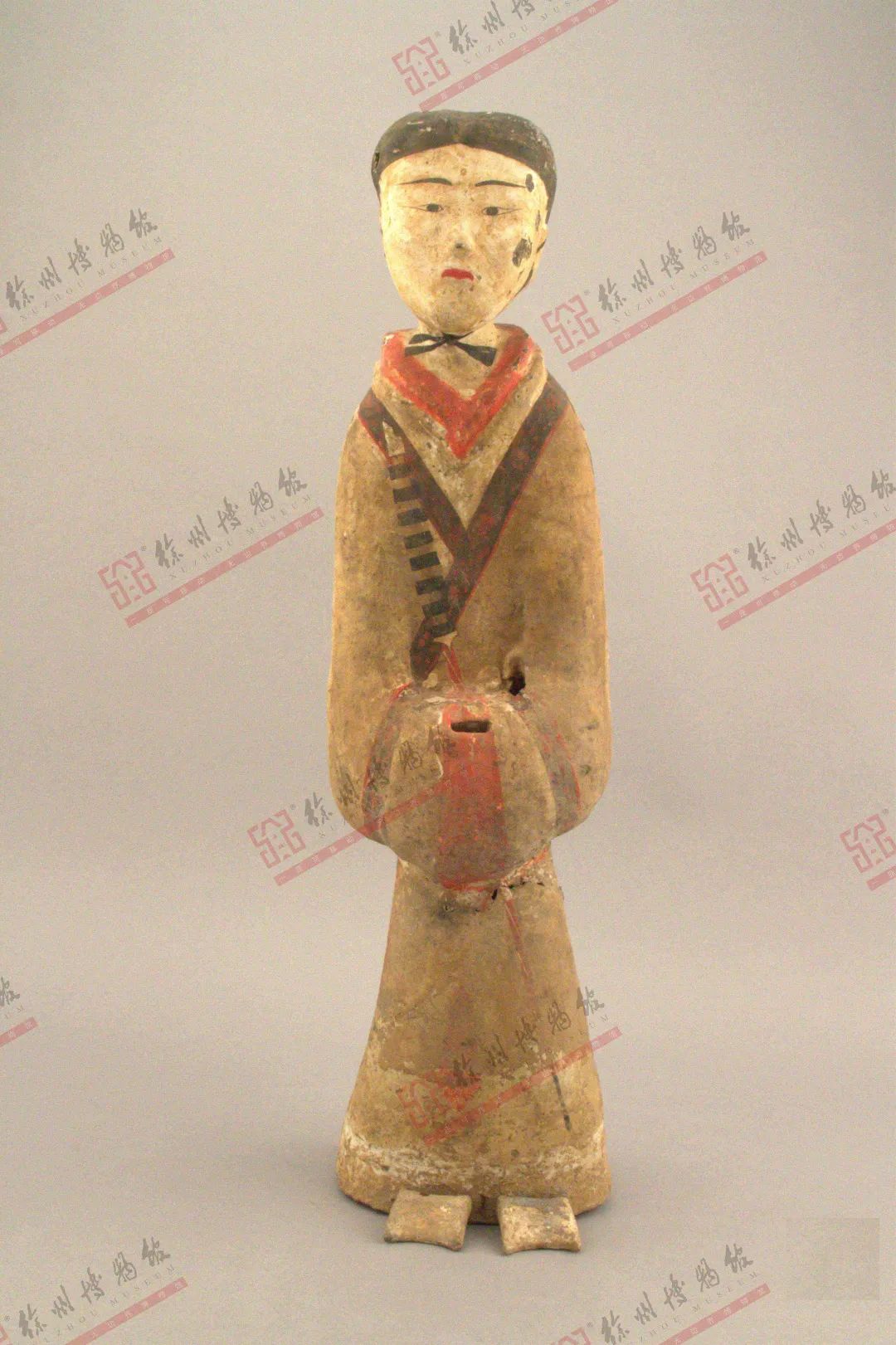Treasures of the Han Dynasty | Western Han Dynasty Painted Pottery Figures

Column introduction
"Han Feng Treasures" is a cultural relic display column produced by Xuzhou Museum, which aims to better publicize the precious cultural relics in the Xuzhou Museum, pay attention to the stories behind the cultural relics, enhance national self-confidence and pride, and inspire love for excellent Chinese culture. Enrich the spiritual and cultural life of the people.
Western Han Dynasty painted pottery figurines

Copyright registration number: Su Zuodeng Zi-2022-G-00091902
【Name】: Western Han Dynasty painted pottery figurines
【Era】: Western Han Dynasty
【Size】: Height 50 cm, width 12 cm
【Source】: Tomb of King Chu in Beidong Mountain, Xuzhou
【Collection unit】: Xuzhou Museum
【Grade of cultural relics】: National first-class cultural relics
The figurines wear hats or crowns, three layers of dark clothes, and the right collar is handed over. Stand with hands folded, sleeves covering both hands. There is a rectangular hole at the hand, which should be used for the wat board. The wat board is made of bamboo and wood, which has been rotten, and only debris remains in the hole. There is also a small hole in the left rib, which is presumed to be the place where the sword was inserted. The sword may also be a bamboo (wood) product. Most of the scabbards are painted in black, red, yellow and white. These terracotta figurines have big eyes, straight noses, no beards, girdle around the waist, and a set of belts hanging in front of the abdomen, and the feet are on double-pointed feet. "Book of Rites · Yuzao": "Wat, hand board. (Courtesy) have fingers painted in front of the king, ordered to be in front of the king, and book the wat." "Book of Jin Yufu Zhi" contains: "If there is something in the wat, it will be written, so it is often The hairpin pen, today's white pen is its relic. The three-level, five-province, second-grade civilian officials have hairpins, and the kings, princes, marquis, uncles, sons, men, Qing Yin, and military officials do not have hairpins. It can be seen that this kind of pottery figurines holding a wat in the arch should be a civil official with a higher position, representing the image of a civil official with a higher official position in the state of Chu. The figurines are complete in shape, unique in shape, vivid in figures, lifelike, and have a strong three-dimensional sense. The carcass is painted in red and black, with brilliant colors and exquisite workmanship. Historical, cultural and artistic value.
The Tomb of King Chu in Beidongshan is located in Dongshan Village, Maocun, Tongshan, Xuzhou City. In September 1986, the Department of Archaeology of Nanjing University and Xuzhou Museum jointly conducted excavations. In the seven niches on both sides of the open-air corridor, 224 painted Yiwei pottery figurines were unearthed. Most of them are well preserved, with lifelike expressions, like real people, but the size is slightly smaller, mostly between 50-58 cm. Its colors are rich and varied, including red, white, black, green, blue, purple, and crimson, with harmonious tone configuration and smooth and elegant lines. Although the pottery figurines are molded, they are painted differently, with vivid and detailed facial expressions, slender eyebrows and beards, and various forms. Even the single and double eyelids are clearly distinguishable, integrating sculpture and painting skills.